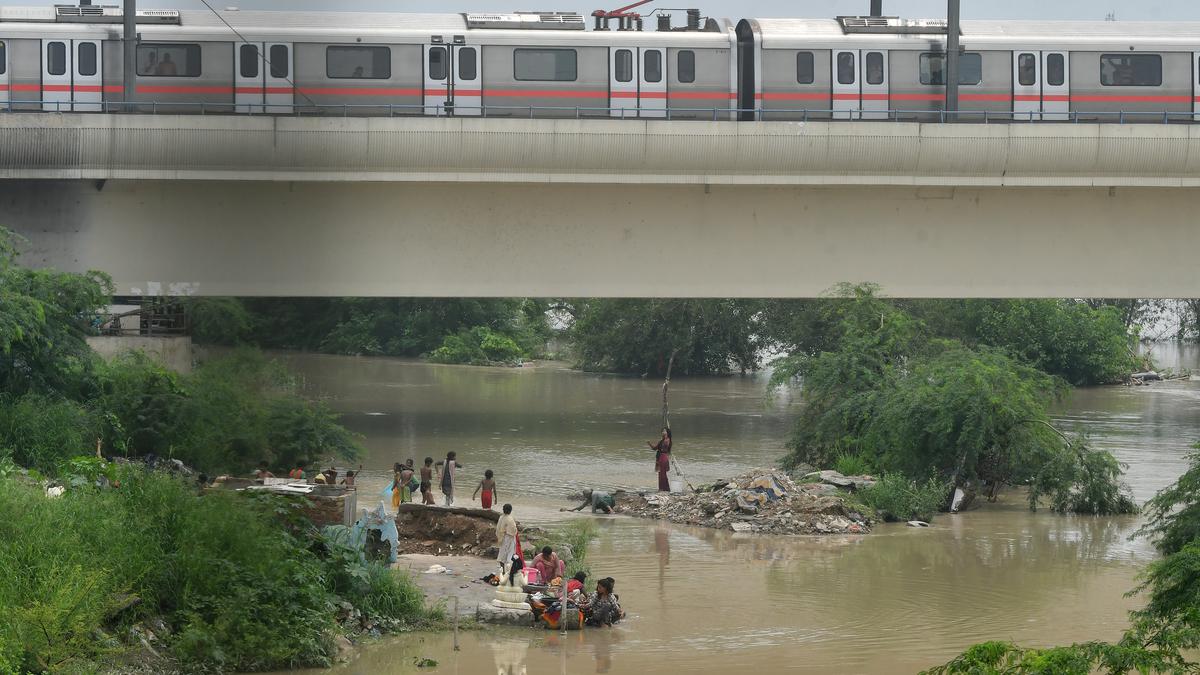
Delhi floods | Yamuna Bank metro station opened for public as water recedes
The Hindu
The Yamuna river has been in spate for the last one week, swelling to 207.71 metres on Wednesday, breaching its all-time record of 207.49 metres set in 1978, and inundating several key areas in Delhi.
Entry and exit of passengers at Yamuna Bank Metro Station on the Blue Line has been reopened after the Yamuna registered a drop in its water level, officials said on July 16.
Entry and exit at the station had been closed on Thursday due to the rise in the Yamuna River water level.
The river has been in spate for the last one week, swelling to 207.71 metres on Wednesday, breaching its all-time record of 207.49 metres set in 1978, and inundating several key areas in Delhi.
Also read: Yamuna water level breaches 60-year record; Kejriwal seeks Centre’s help
The water level in the Yamuna in Delhi came down to 207.98 metres at 11 p.m. on Friday from 208.66 metres on Thursday, three metres above the danger mark of 205.33 metres.
The water level in the river on Sunday was recorded at 205.98 metres.
The Delhi Metro authorities had on Thursday suspended entry to the Yamuna Bank Metro Station after it was rendered inaccessible due to waterlogging.

“Writing, in general, is a very solitary process,” says Yauvanika Chopra, Associate Director at The New India Foundation (NIF), which, earlier this year, announced the 12th edition of its NIF Book Fellowships for research and scholarship about Indian history after Independence. While authors, in general, are built for it, it can still get very lonely, says Chopra, pointing out that the fellowship’s community support is as valuable as the monetary benefits it offers. “There is a solid community of NIF fellows, trustees, language experts, jury members, all of whom are incredibly competent,” she says. “They really help make authors feel supported from manuscript to publication, so you never feel like you’re struggling through isolation.”

Several principals of government and private schools in Delhi on Tuesday said the Directorate of Education (DoE) circular from a day earlier, directing schools to conduct classes in ‘hybrid’ mode, had caused confusion regarding day-to-day operations as they did not know how many students would return to school from Wednesday and how would teachers instruct in two modes — online and in person — at once. The DoE circular on Monday had also stated that the option to “exercise online mode of education, wherever available, shall vest with the students and their guardians”. Several schoolteachers also expressed confusion regarding the DoE order. A government schoolteacher said he was unsure of how to cope with the resumption of physical classes, given that the order directing government offices to ensure that 50% of the employees work from home is still in place. On Monday, the Commission for Air Quality Management in the National Capital Region and Adjoining Areas (CAQM) had, on the orders of the Supreme Court, directed schools in Delhi-NCR to shift classes to the hybrid mode, following which the DoE had issued the circular. The court had urged the Centre’s pollution watchdog to consider restarting physical classes due to many students missing out on the mid-day meals and lacking the necessary means to attend classes online. The CAQM had, on November 20, asked schools in Delhi-NCR to shift to the online mode of teaching.









